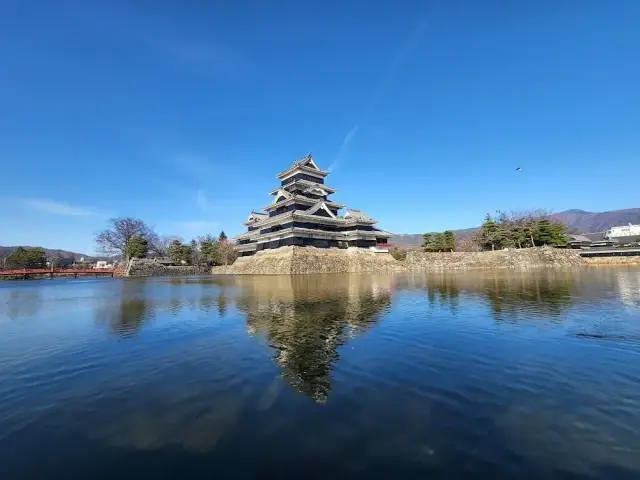https://www.dekitabi.com/itinerary/matsumoto-narai-juku-tour
Japan’s historical charm is vividly preserved in its ancient towns, majestic castles, and sacred shrines. Among the most captivating destinations in Japan are Nakasendo Narai-juku, Matsumoto Castle, and Yohashira Shrine. Each offers a unique glimpse into the country’s rich cultural heritage and timeless beauty, making them essential stops on any exploration of Japan’s historical treasures.
Nakasendo Narai-juku: A Journey Through Japan’s Historic Post Town

https://www.dekitabi.com/attraction/narai-juku
Nestled in the Kiso Valley of Nagano Prefecture, Nakasendo Narai-juku is one of the most well-preserved post towns along the historic Nakasendo Trail. This ancient route, which connected Kyoto and Tokyo during the Edo period, offers visitors a picturesque journey through Japan’s past.
Walking through Narai-juku is like stepping back in time. The town’s charming Edo-period architecture, traditional wooden houses, and cobblestone streets create an atmosphere of historic tranquility. Many of the buildings in Narai-juku have been carefully preserved or restored, allowing visitors to experience the ambiance of a bygone era.
The town is renowned for its well-maintained ryokan (traditional inns) and tea houses, which offer a taste of traditional Japanese hospitality. A stroll through Narai-juku reveals a variety of historical sites, including the old post office and merchant homes that once catered to travelers along the Nakasendo. The local shops offer traditional crafts and souvenirs, providing a perfect opportunity to pick up unique gifts and mementos.
Matsumoto Castle: The Jewel of Japan’s Castles

https://www.dekitabi.com/attraction/matsumoto-jo-castle
Matsumoto Castle, also known as “Crow Castle” due to its black exterior, stands majestically in Matsumoto City, Nagano Prefecture. This iconic castle is one of Japan’s most beautiful and well-preserved original castles, dating back to the 16th century.
The castle’s striking black and white façade, with its elegant multi-tiered roofs and defensive features, make it a standout example of Japanese feudal architecture. Matsumoto Castle is a designated National Treasure of Japan and is known for its picturesque setting against the backdrop of the Japanese Alps. The contrast between the dark wood of the castle and the surrounding natural landscape creates stunning photo opportunities throughout the year.
Visitors to Matsumoto Castle can explore its well-preserved interior, which includes historical exhibits and displays of samurai armor and weaponry. The castle grounds feature a beautiful moat and a lovely park, providing a serene environment for leisurely walks. Climbing to the top of the castle offers panoramic views of the surrounding city and mountains, adding to the castle’s allure.
Yohashira Shrine: A Sacred Space in Matsumoto City

https://www.dekitabi.com/attraction/yohashira-jinja-shrine
Located in the heart of Matsumoto City, Yohashira Shrine is a serene Shinto shrine with deep historical and cultural significance. Established over 1,200 years ago, Yohashira Shrine is dedicated to the deity of protection and guidance, making it an important spiritual site for locals and visitors alike.
The shrine’s tranquil setting, surrounded by lush greenery and traditional architecture, offers a peaceful retreat from the bustle of city life. The main shrine building, with its intricately carved wooden details and vibrant red torii gates, provides a picturesque backdrop for reflection and spiritual renewal.
Yohashira Shrine is also known for its annual festivals and traditional ceremonies, which showcase the vibrant cultural heritage of Matsumoto. These events often feature traditional music, dance, and local crafts, providing a deeper understanding of Japanese customs and practices.
Discovering the Essence of Japan’s Cultural Heritage
Nakasendo Narai-juku, Matsumoto Castle, and Yohashira Shrine each represent a distinct aspect of Japan’s rich cultural heritage. Narai-juku offers a glimpse into the daily life of historical post towns, Matsumoto Castle stands as a symbol of feudal Japan’s architectural prowess, and Yohashira Shrine provides a serene spiritual retreat.
Exploring these destinations allows visitors to experience the timeless beauty and cultural depth of Japan. Whether wandering through the historic streets of Narai-juku, admiring the grandeur of Matsumoto Castle, or finding solace at Yohashira Shrine, each location offers a unique and enriching journey through Japan’s past.


Leave a Reply